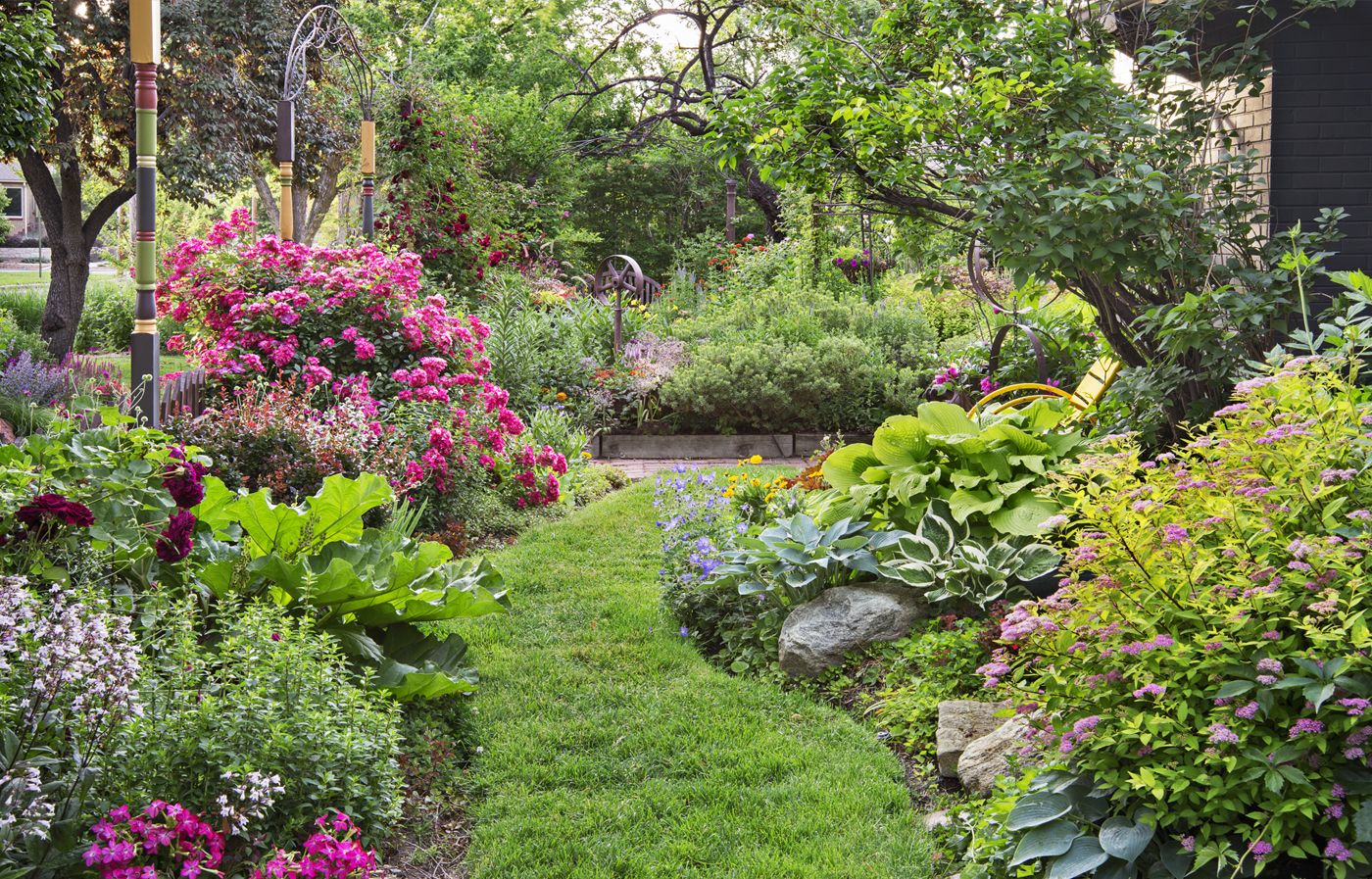Garden Paradise Made
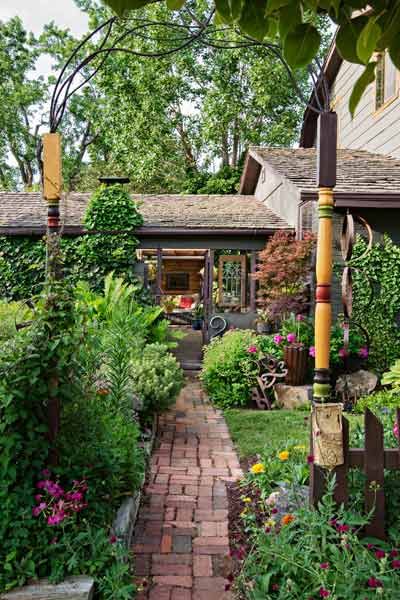
On a corner lot in the city, with an alley running along the back, it can be quite a challenge to create private outdoor space. Holly Fliniau knows, because that’s exactly the situation she faced when she moved into this Denver home, in 1993.
She didn’t really have a plan when she started landscaping the property, but what evolved could be a textbook example of good garden design. She created a series of “rooms” that flow into one another and yet each have a distinct sense of place. Vine-covered fences and arbors shield various seating areas from the streets and the alley but don’t come across as unfriendly walls. And generous plantings on both sides of the sidewalks give neighbors plenty to enjoy as they walk by on their way to the neighborhood park.
Shown: Salvaged and new porch posts painted with the same colors support an arch and trellises along the garden’s street side.
Help from a Mother’s Green Thumb
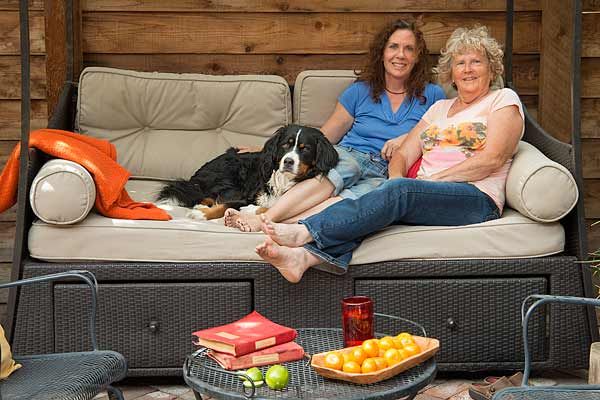
At first, Holly’s main goal was just to create a little privacy and an outdoor dining area. She installed brick paving along one side of the house and at the back, and built a roof over one end so that she could put a table and chairs underneath. Her next project was the picket fence alongside one sidewalk. Then she decided to have her upcoming wedding in her garden. But the leftover lawn and vegetable gardens of the previous owners didn’t quite suffice for a lovely outdoor ceremony. So Holly’s mother, Sandy, came to help put in a large perennial garden with a brick path at the rear of the side yard closest to the street.
Shown: Holly and her mother and gardening partner, Sandy Fliniau, relax on the daybed along with Holly’s Bernese mountain dog, Sophie.
One Perennial Garden Turns into Another
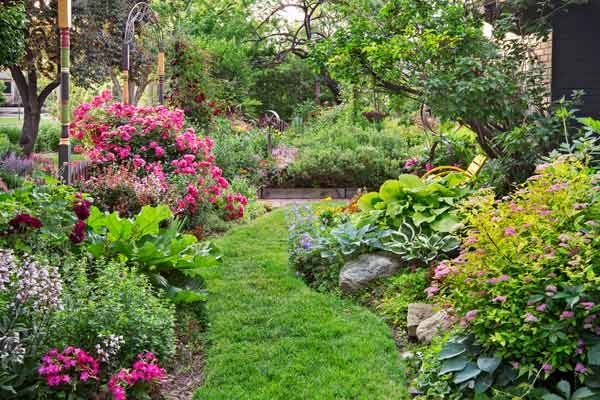
“One project turned into another, and I caught the gardening bug,” says Holly, who delights in the way her outdoor pastime is the polar opposite of her day job as a chemical engineer dealing with hazardous-waste cleanup. “It allows me to exercise the artistic part of my brain.” Before that first perennial garden was done, she was already dreaming about putting in another.
Shown: At the north end of the house, a grassy path meanders between perennial beds.
Secluded Beer Garden
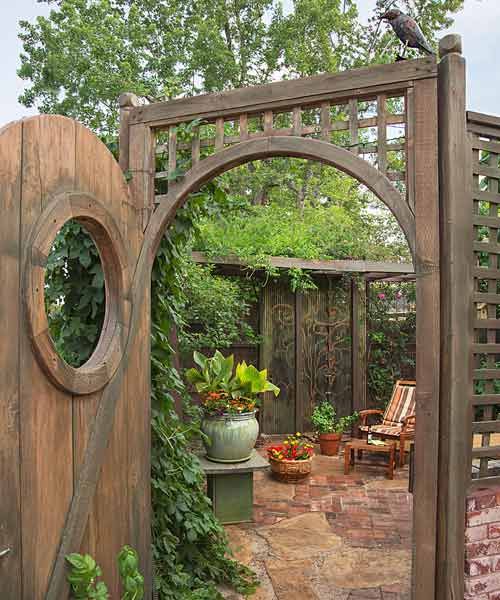
After the wedding, she did just that, toward the front of the house. But there was more. Because her husband (now ex) was interested in home brewing, she created a little beer garden off the back alley, next to the driveway, with a bar and table seating and a vigorous hops vine that softens the walls and surrounding arbors. In the side yard, next to a fence she shares with her neighbor, she squeezed in a secret spot to take an outdoor shower. Directly opposite the breezeway, she added a pergola with a corrugated plastic roof and installed a daybed in the sheltered space underneath. “My dad teases me that I just need an outhouse, and I could live out here,” Holly says, referring to all the amenities she’s put in place.
Shown: A beer garden with a lush hops vine is tucked between the narrow alley and the garage. Holly set the door at an angle to allow easy turning into the driveway. The vine’s flowers exude a heady scent in midsummer. Porthole openings in the arched door were made with timbers salvaged from an old garage.
Dry Gardening Fit for Denver
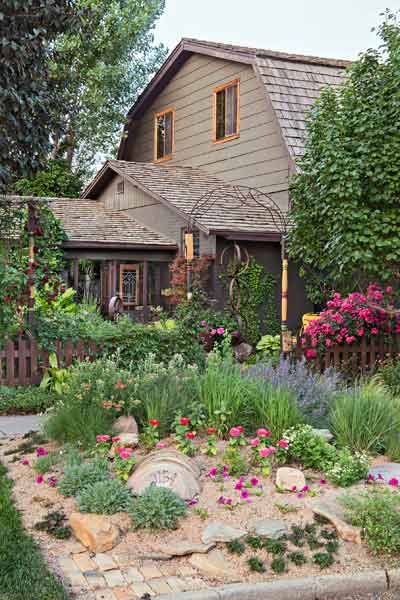
While Holly was making headway installing her outdoor living areas, she was also tackling the planting strips between the sidewalks and the streets. These expanses, which are 10 to 15 feet wide, were just lawn, which she had to constantly irrigate, weed, and mow. “I was paying more each year to my lawn service even as I was reducing the lawn’s square footage,” she says. She discovered a solution when she visited a demonstration xeriscape, or dry garden, now promoted as the most suitable kind of landscaping for arid climates like Denver’s. The garden’s drought-tolerant plantings impressed Holly with their lush look. She decided to copy the idea at her house by putting in one approximately 10-by-15-foot xeriscape garden each year until her streetside gardens were transformed. Frustrated by having to dig up the old lawn, she started just covering it with cardboard and piling on alternating layers of leaves and soil. Adding a blanket of fine pea gravel around the plants keeps weeds down and moisture in.
Shown: In the planting strips between sidewalk and street, Holly has been gradually converting from conventional lawn to water-thrifty perennials. This new bed is also planted with colorful annual petunias and zinnias to fill in until the perennials—including yarrow, catmint, manzanita panchito, and golden storksbill—become well established. Behind the picket fence, new and old ironwork and salvaged ornaments add an artistic personality to the gardens beside the house.
Lawn to Street Plant Fillers
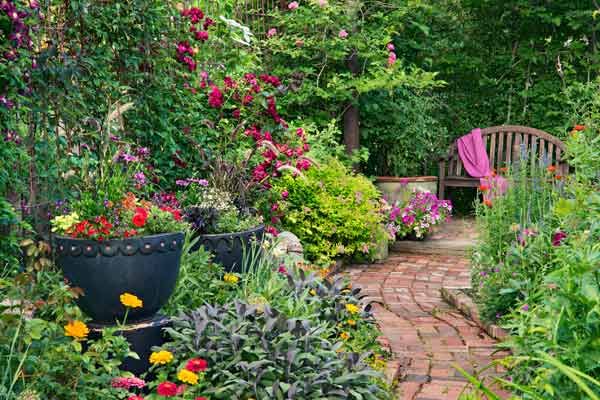
There is still a bit of lawn visible from the street, but it isn’t the old thirsty kind. To separate the xeriscape beds, Holly planted strips of Bella bluegrass, a dark blue-green grass adapted to Denver’s climate that grows only 4 inches tall, so it almost never needs mowing. “Finally, after getting rid of most of my lawn and replanting what remained with the Bella bluegrass, I could let my lawn service go!” she says happily.
Shown: Orange and scarlet zinnias and purplish sage help fill one of the beds at the far end of the property, which is separated from the street and sidewalk by an arbor covered with clematis and roses. The thickly planted beds don’t require much weeding, as they leave little room for interlopers. Holly loves to sit on the bench at the back to enjoy the view and listen in as passersby comment on her garden.
Playing with Garden Displays
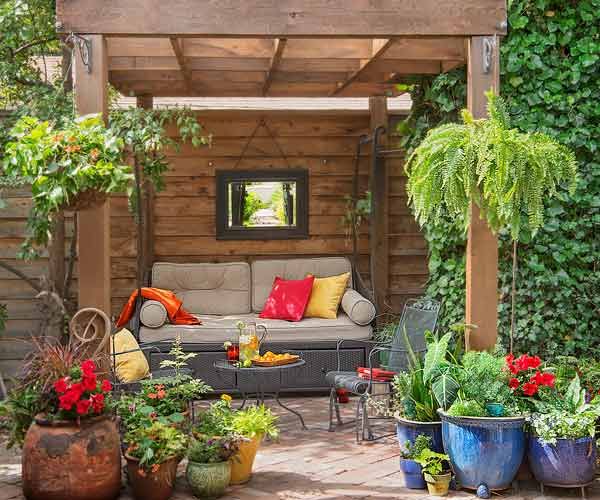
The rest of Holly’s yard isn’t a xeriscape, but she takes pride in how much less water it needs than people assume it does, given how verdant it looks. She switches on her sprinkler system a few times each week for about 20 minutes per irrigation zone. “My mom and I have learned that ‘shoehorning in’ plants close together reduces the need for water and weeding,” she says. Conventional advice cautions gardeners against placing plants too close, on the theory that it will lead to disease. But in Denver’s dry climate, Holly hasn’t had a problem. Close spacing also creates spectacular displays, especially when plants are arranged in drifts. “A friend of mine once said that I subscribe to the ‘big bang theory’ of gardening,” Holly says. “My mom describes it as a village of plants all holding hands in support of one another. I think both are good descriptions.”
Shown: A wood pergola shelters a daybed at one end of the brick patio that homeowner Holly Fliniau built off the breezeway to the garage. The bed backs up to a board fence that she shares with her neighbor. Colorful potted plants mark the outdoor room’s entrance and soften the structure’s beefy support posts.
No Fighting Nature
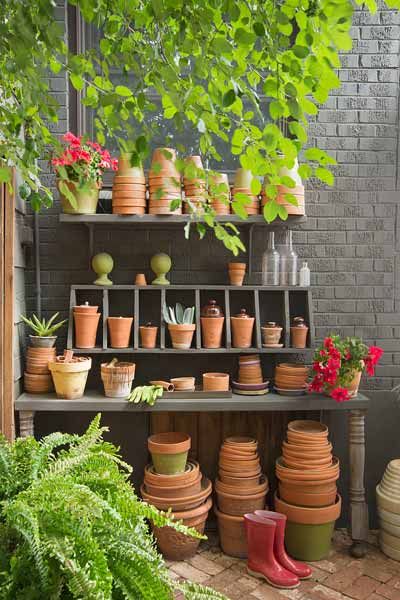
Among the other lessons Holly has learned is not to fight nature. “We are both happier for it,” she says. “If a tree wants to lean a certain way or a plant moves to a new location or won’t leave a location that I don’t want it in, or even if it dies, then that’s fine with me.” She no longer buys grafted roses, having discovered that roses growing on their own root stock recover better after harsh winters. She does, however, try to group some colors together. “That tendency probably comes from me sorting my marble collection by colors as a kid.”
Shown: Holly amassed old clay pots before she realized how fast plants dry out in small containers. So now she displays them mostly as decoration on an old potting bench she cobbled together from odds and ends she found in her garage.
Repurposed Elements
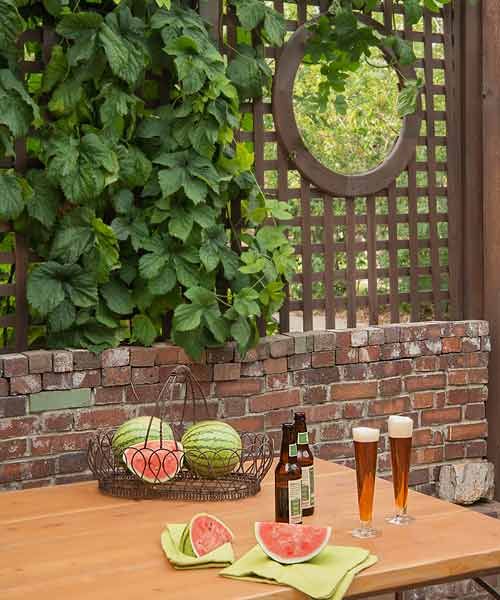
Holly has also learned to repurpose, as garden art, items that might otherwise go into the trash. She used recycled bricks for the back patio and the garden paths and put an old sewing-machine base to work as a plant stand. She salvaged iron rings from decaying whiskey barrels and gave them to her father, who turned them into a rain-chain sculpture that hangs from the back of her house. She also came to love and collect repurposed-iron art from a neighborhood gallery.
Shown: Lattice-topped brick walls offer a glimpse into Holly’s hidden world.
Patina All Around
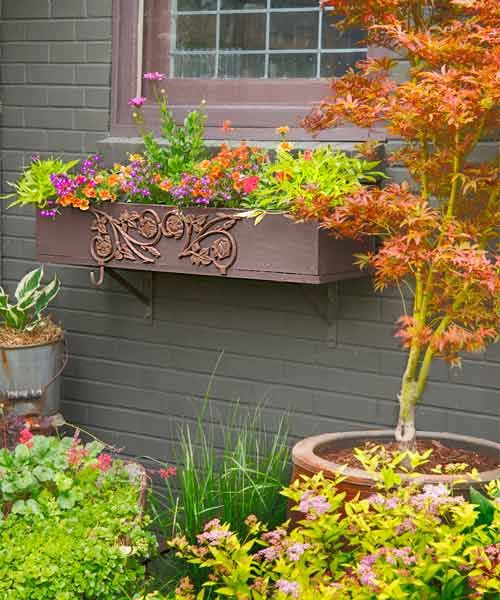
For a gardener who started out on a mission to create private space, one of the biggest surprises was the way gardening opened up a whole new set of friendships. Holly had an artist friend ask if she could set up an easel and paint in the garden. “More came on her heels, and now an entire group of artists paints in my garden every year,” she says. “As a result, I am now an art collector. And through being on garden tours and taking gardening classes, I have made new friends of fellow gardening enthusiasts.”
Shown: A window box planted with orange and purple calibrachoas got a style boost with a metal ornament repurposed from a broken coatrack. Its rusty patina echoes the foliage of a nearby Japanese maple. An old pail is also put to use as a container for a variegated hosta.
DIY Leaf Birdbath
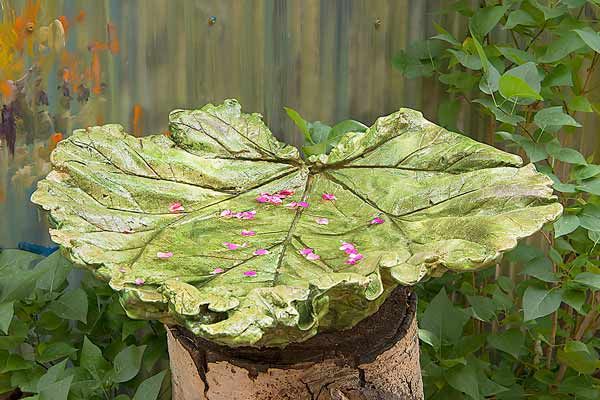
The garden also gives Holly’s mother a way to pass on her vast, mostly self-taught knowledge of gardening to others. Holly says, “Countless times during her visits, I hear her out in the garden answering questions from people passing by the garden on their way to the neighboring park. Some even seek her out now that they recognize her car.”
Shown: A frequent visitor, Sandy made the concrete birdbath using a giant rhubarb leaf as a mold, then painted it; the trunk of a fallen aspen tree serves as its stand.
Colorful Character
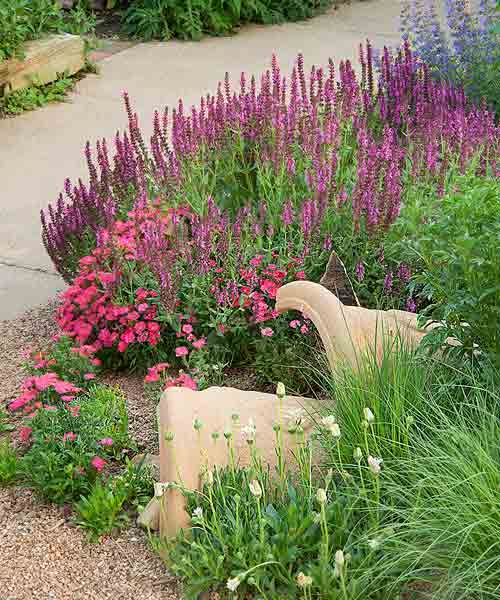
Holly says that she herself is shy, so she tends not to join the conversation. But she does love to sit on a wood bench at the very back of the yard, alongside the brick path. The sidewalk is just a few feet away, on the other side of a clematis-and-rose-covered arbor, so she can listen in as people walk by. “They can’t see me sitting there, but I can hear them talk about the garden,” she says. “They’ll say, ‘Oh, look at this,’ and ‘Can you believe that?'” Holly finds it deeply satisfying to hear how they appreciate what she’s accomplished even when they don’t need to be polite. “I’ve also discovered that there is no stopping avid gardeners,” she adds. “They won’t be deterred from coming on in—and that’s all right with me.”
Shown: Most of the dry garden beds feature broken pots buried in the soil that suggest an urn with water spilling out. Instead, drifts of brilliant perennial flowers flow from them. Here, ‘Pink Friesland’ salvia, hot-pink dianthus, and ‘Avalanche’ white sun daisy.
‘Peace’ Rose with a History
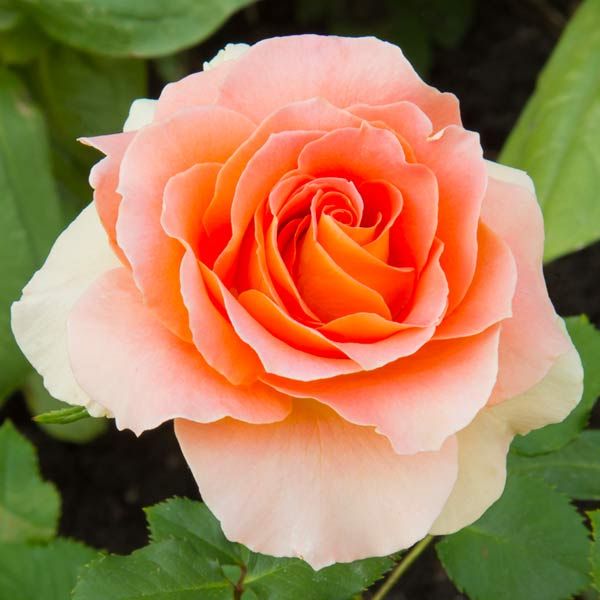
This beauty is a ‘Peace’ rose, one of the most popular roses of all time. French horticulturist Francis Meilland bred it in the late 1930s and sent cuttings to friends in several countries because he feared the German army might invade and destroy it. The rose supposedly arrived in the United States on the last plane available before the German invasion.
‘Polka’ Climbing Rose
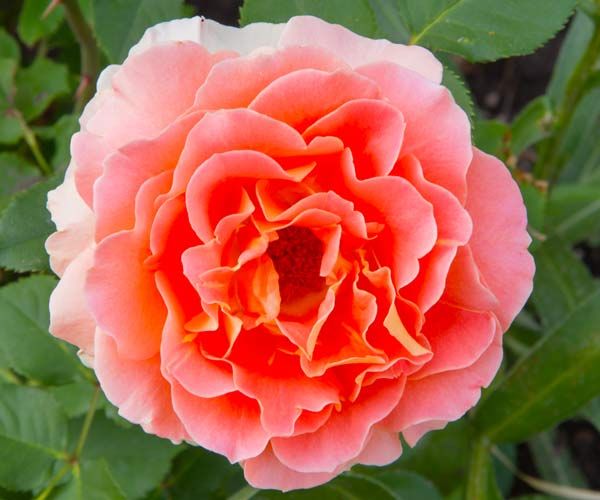
For a climbing rose, Holly chose ‘Polka,’ a fragrant variety with peony-like blossoms about 6 inches across. It blooms in waves throughout the summer.
Color-Enhancing Plant Combos
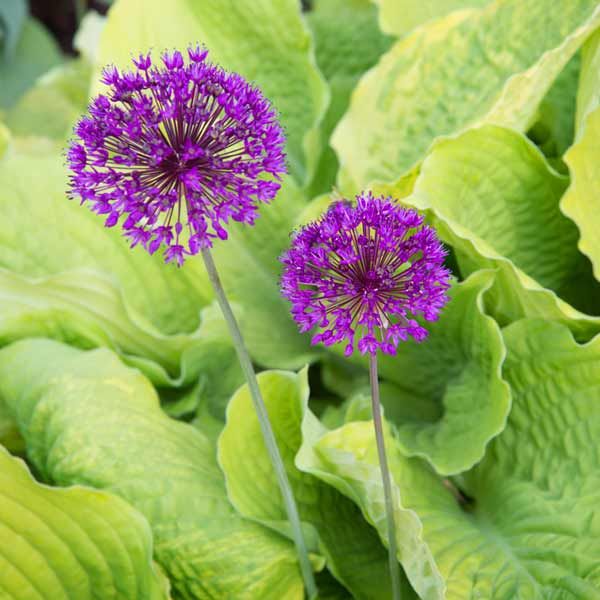
Holly works to create plant combinations that make individual colors stand out, such as the chartreuse leaves of ‘Frances Williams’ hosta with ‘Purple Sensation’ allium.
Hardy ‘Morden Sunrise’ Rose

Bred at the Morden Research Station, in Manitoba, Canada, this blush-colored ‘Morden Sunrise’ rose is very cold hardy, surviving down to minus 40 degrees F. The shrubs grow 2 to 3 feet high and spread about 3 feet across.
‘Robinson’s Red’ and Lavender Flowers
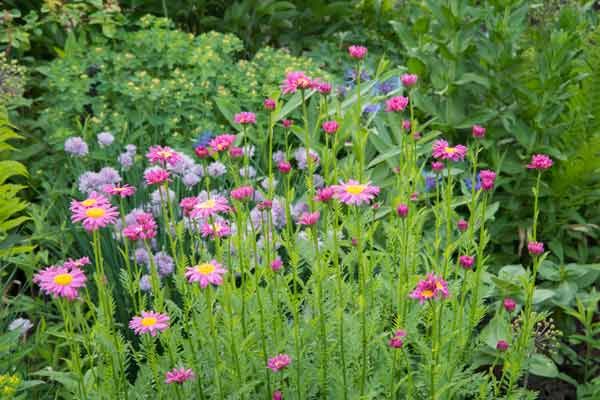
‘Robinson’s Red’ painted daisies grow alongside chive plants that Holly grows primarily for their lavender flowers.
Cohabitating Purples
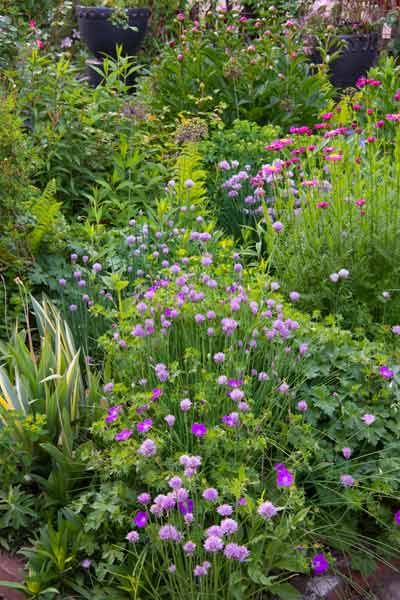
The light-purple flowers of edible chives share a perennial bed with darker-purple cranesbill, also known as hardy geranium. The common name “cranesbill” comes from the shape of the seed capsules.
Show-Stealing Colors
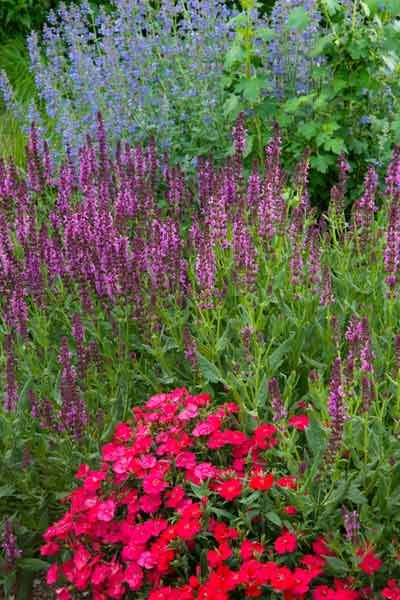
Although backed by airy blue ‘Walker’s Low’ catnip (Nepeta racemes) and spikes of ‘Pink Friesland’ salvia (S. nemorosa), it’s the neon-red pinks (Dianthus) that really steal the show in this bed.
Street-Shielding ‘Alexandra’ Roses
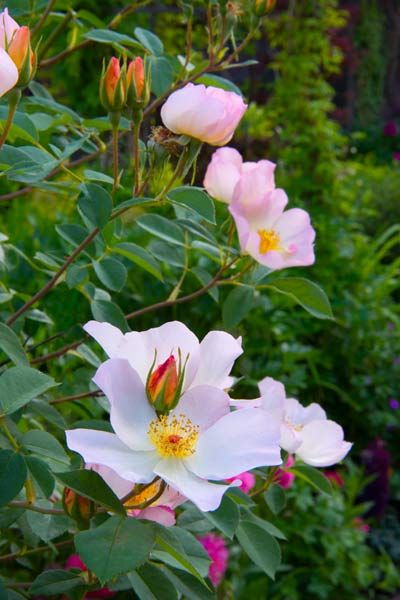
A delicate looking but actually very hardy heirloom variety, the ‘Alexandra’ rose blooms on a trellis separating Holly’s side yard from the street.
Ferns and Hostas Backdrop
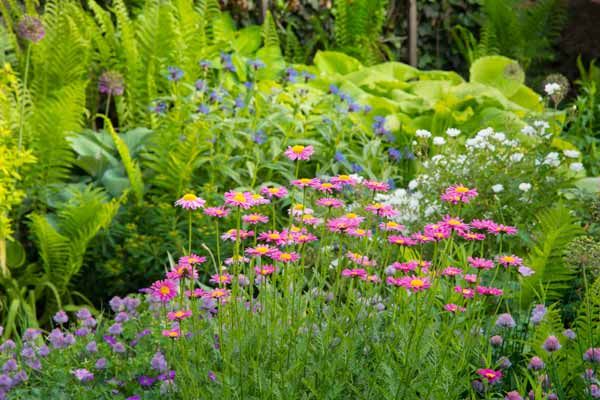
Holly uses ferns and hostas as a backdrop for colorful flowers including light-purple chives, pink ‘Robinson’s Red’ painted daisies (Tanacetum coccineum), white ‘Gourmet Popcorn’ roses, and blue perennial bachelor’s buttons (Centaurea montana).
Accidental ‘Dr. Huey’ Blossoms
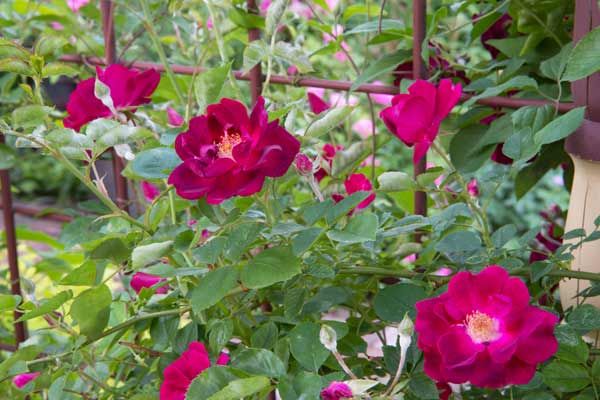
This deep crimson, almost maroon climbing rose is actually an accident. Holly planted a tea rose that was grafted onto the super-hardy roots of the ‘Dr. Huey’ rambling rose. An unusually cold winter killed the graft but not the roots, so the plant sent up new shoots and now she has ‘Dr. Huey’ blossoms instead.
Blue and Pink with Grass All Around
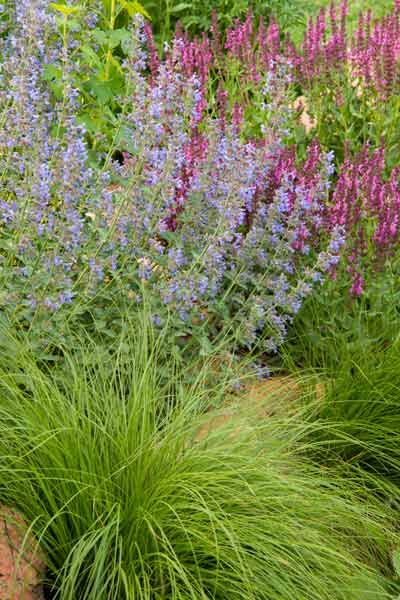
Delicate blue wands of ‘Walker’s Low’ catnip (Nepeta racemes) contrast with bolder spikes of ‘Pink Friesland’ salvia (S. nemorosa). The ornamental grass in the front is Mexican feather grass, also known as ponytail grass (Stipa tenuissima).
Arbor-Hugging ‘Margaret Hunt’ Clematis
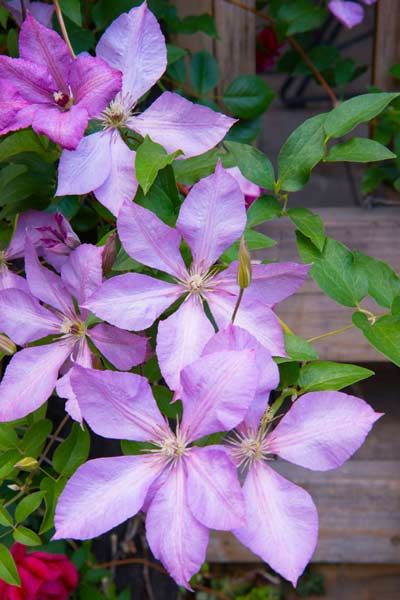
‘Margaret Hunt’ clematis is one of several varieties growing on an arbor that screens Holly’s backyard from the sidewalk along one side yard of her house. This clematis blooms on the current season’s growth, so pruning is simpler than with some other clematis varieties. Holly just cuts the vines back in early spring to a foot or two from the ground.
Contrasting Textures and Colors
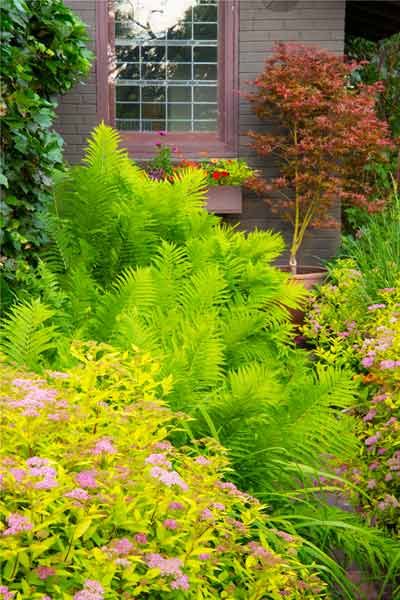
The dusty pink flowers and chartreuse leaves of ‘Limemound’ spirea (S. japonica) contrast in both texture and color with the feathery fronds of ostrich fern (Matteuccia struthiopteris). Next to the house is a rusty-red ‘Shirazz’ Japanese maple in a container.
The Garden Plan
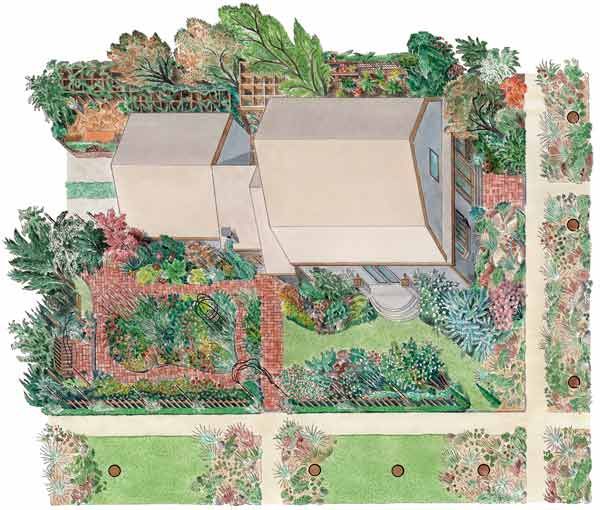
At Holly Fliniau’s home, curving paths and porch-post arbors shield the house and outdoor seating areas, as do lattice walls, a breezeway, and tall perennials and shrubs. The streetside xeriscape gardens share space with several trees—ornamental plums and a pear, an oak, and maples—that also provide privacy; these are indicated here with red circles but not drawn, to make the gardens more visible.
